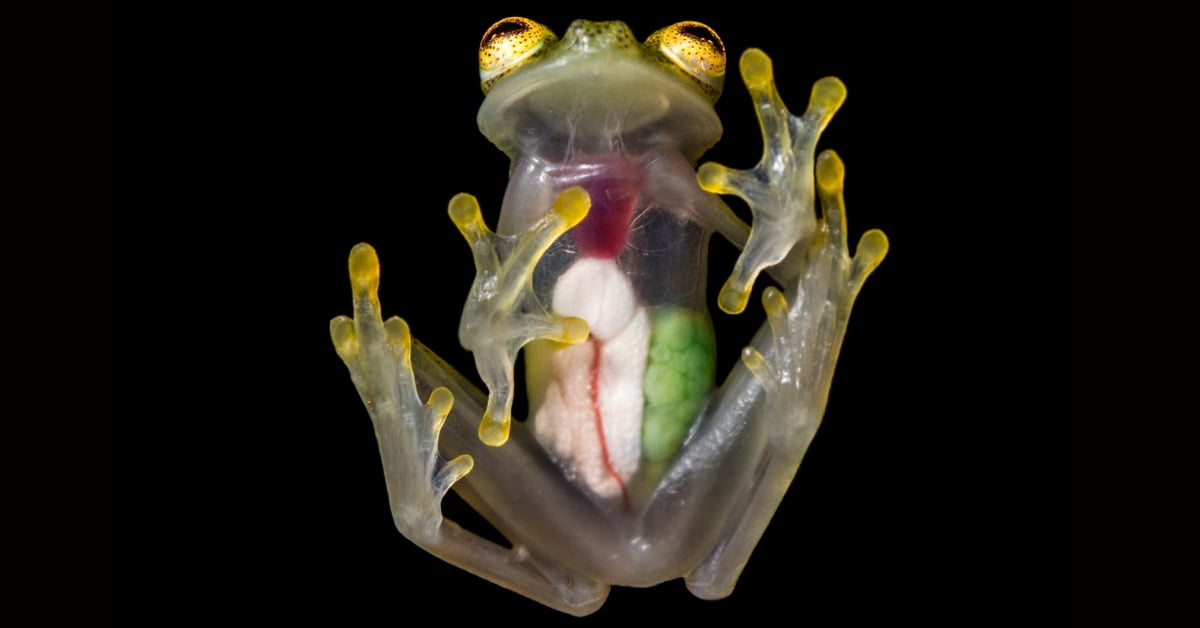The transparent skin of glass frogs reveals their internal organs – and sometimes even the eggs that are waiting to be hatched.

Found in the rainforests of Central and South America, glass frogs are some of the only partially see-through land animals on Earth – and their transparency is actually their greatest strength.
Glass frogs are amphibians with a unique physical feature: their translucent skin makes their insides visible to the spectator, giving a full view of their intestines, lungs, and sometimes even their beating heart.
One would think this feature makes them vulnerable to predators, but in reality it serves as a powerful defense mechanism. From its odd camouflage technique to its unique everyday behaviors, this partially transparent frog is truly something to behold.

Glass frogs are native to Central and South America and are often found in the rainforests of Panama, Colombia, Ecuador, and Costa Rica. Their translucent skin is by far their most distinctive feature. Indeed, glass frogs are the only known land animals with a partially see-through body on Earth (with the possible exception of glasswing butterflies).
The evolutionary advantage of translucent skin used to be a mystery, as it did not seem to be effective as camouflage. Recently, scientists found that the colour of the frog’s body changed little against darker or lighter foliage, but the legs were more translucent and consequently changed in brightness. By resting with the translucent legs surrounding the body, the frog’s edge appears softer, with less brightness gradient from the leaf to the legs and from the legs to the body, making the outline less noticeable. Experiments with computer-generated images and gelatine models of opaque and translucent frogs have proved that the translucent frogs were less visible, and were attacked by birds significantly less often.

“In fact, we are just beginning to shed light on how the different forms of camouflage really work. Glass frogs illustrate a new mechanism that we haven’t really considered before,” Behavior ecologist Innes Cuthill from the University of Bristol in the UK explains.
While many glass frog species have partially-translucent bodies that allow us to see bones, intestines, and other inner organs, being able to see the heart is still uncommon. Only a few glass frog species have such a high level of translucency, including the Hyalinobatrachium yaku, which makes its home among the Amazonian lowlands of Ecuador.
Photographer Jamie Culebras recently published a stunning series of new photos of a female glass frog. He was making an inventory of amphibians and reptiles in the Mashpi Reserve in Ecuador when he came across this particular specimen.

“In the picture you can see perfectly the internal organs of the glass frog,” Culebras notes.
What makes these new photos so special is the fact that you can see the eggs of the female growing inside her.
“It is a female and you can also see the eggs that are growing inside, the green balls, which will later lay on the underside of a leaf of a plant over a stream and whose mass eggs will be taken care of by the male,” said Culebras. “After seeing this you can understand why these kind of frogs are called glass frogs.”
